Science Topper`s Answer Sheet - 2019, Class 10 PDF Download
| Table of contents |

|
| Section – A |

|
| Section – B |

|
| Section – c |

|
| Section – D |

|
| Section – e |

|
General Instructions:
(i) The question paper comprises five Sections, A, B, C, D and E. You are to attempt All the sections.
(ii) All questions are Compulsory.
(iii) Internal choice is given in Sections B, C, D and E.
(iv) Questions number 1 and 2 in Section A are one-mark questions. They are to be answered in one word or in one sentence.
(v) Questions number 3 to 5 in Section B are two-marks questions. These are to be answered in about 30 words each.
(vi) Questions number 6 to 15 in Section C are three-marks questions. These are to be answered in about 50 words each.
(vii) Questions number 16 to 21 in Section D are five-marks questions. These are to be answered in about 70 words each.
(viii) Questions number 22 to 27 in Section E are based on practical skills. Each question is a two-marks question. These are to be answered in brief.
Section – A
1. State the S.I. unit of potential difference and name the device used to measure it.
Ans: 
2. List two characteristics of a good fuel.
Ans: 
Section – B
3. Draw a labelled ray diagram to show the path of the reflected ray corresponding to the ray which is directed towards the principal focus of a convex mirror. Mark the angle of incidence and angle of reflection on it.
Ans: 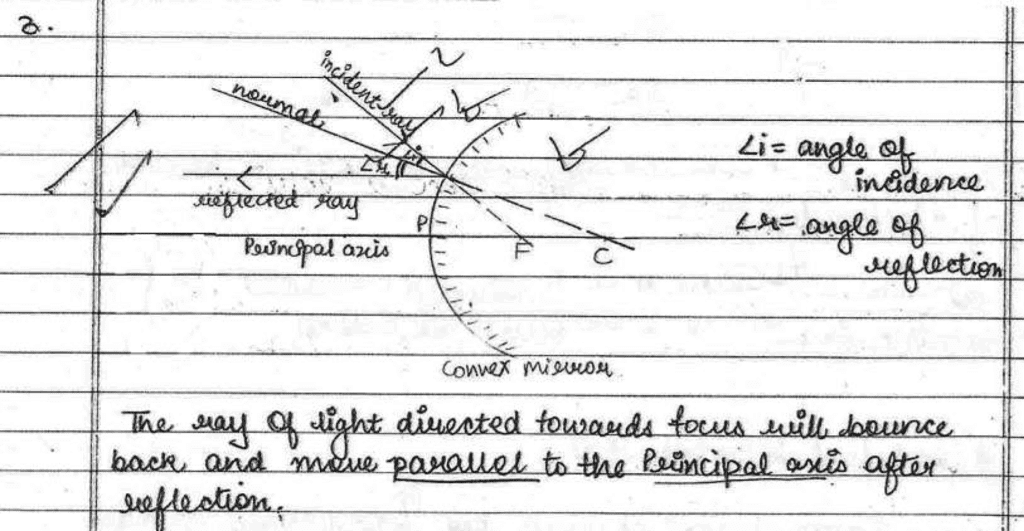
4. List four properties of magnetic field lines.
Ans: 
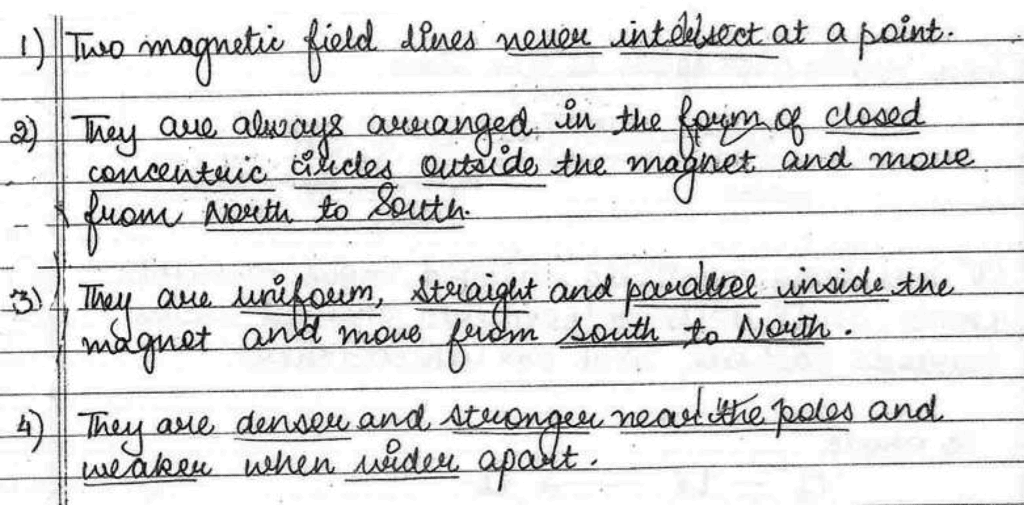
5. What is brine ? What happens when an electric current is passed through it ? Write chemical equation for it.
OR
List the changes that are observed when dil. HCl is added to a small amount of copper oxide in a beaker. Write balanced chemical equation for the reaction.
Ans: 
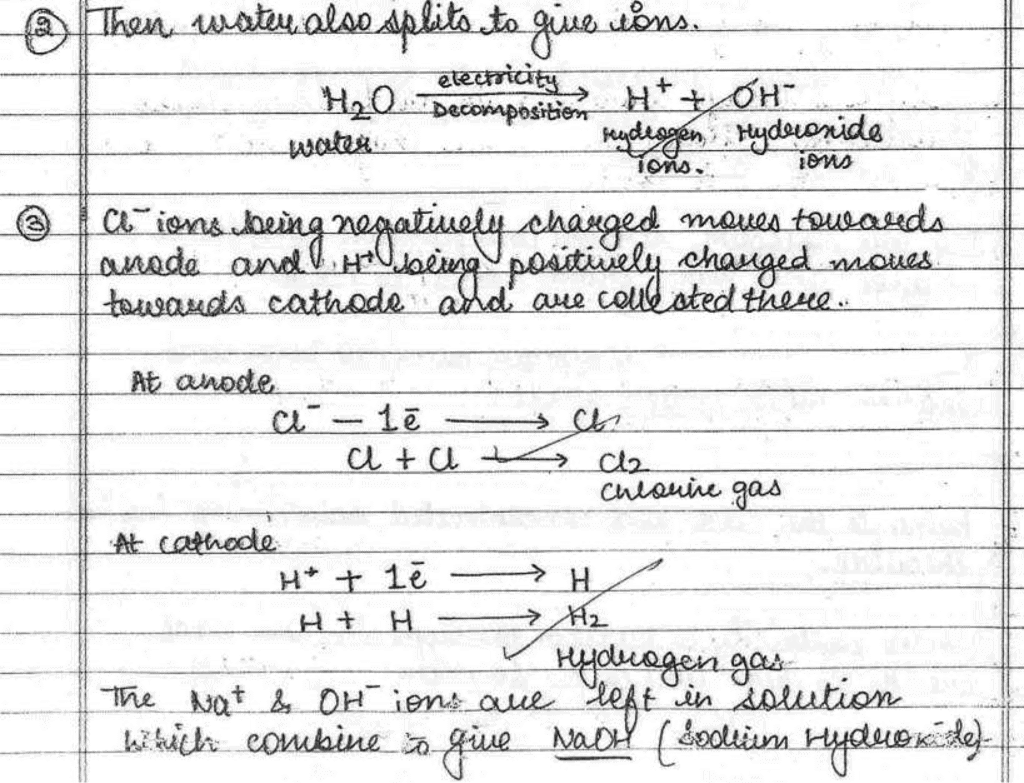

Section – c
6. A concave mirror has a focal length of 20 cm. At what distance from the mirror should a 4 cm tall object be placed so that it forms an image at a distance of 30 cm from the mirror? Also calculate the size of the image formed. 3
OR
A real image 2/3rd of the size of an object is formed by a convex lens when the object is at a distance of 12 cm from it. Find the focal length of the lens.
Ans: 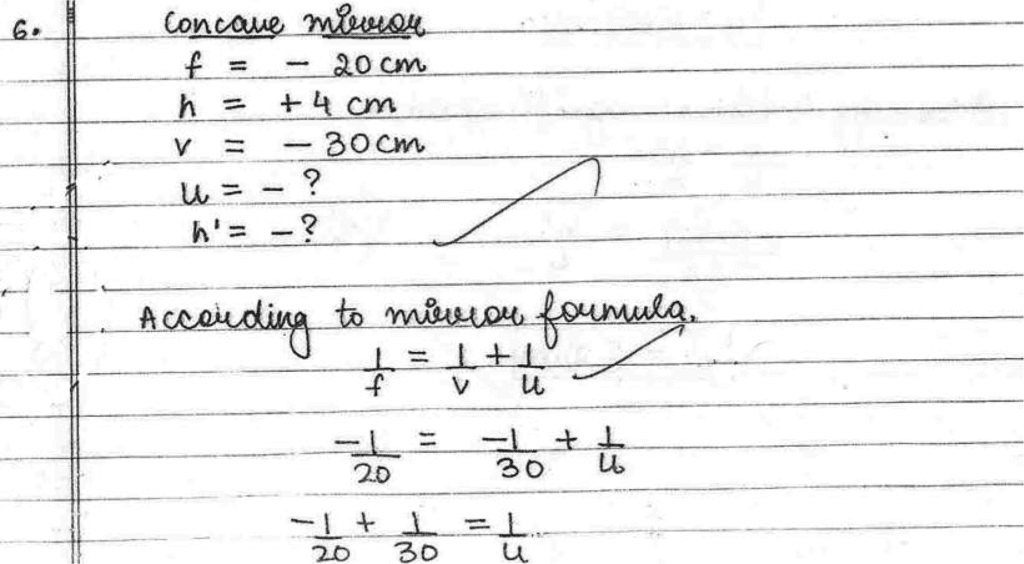

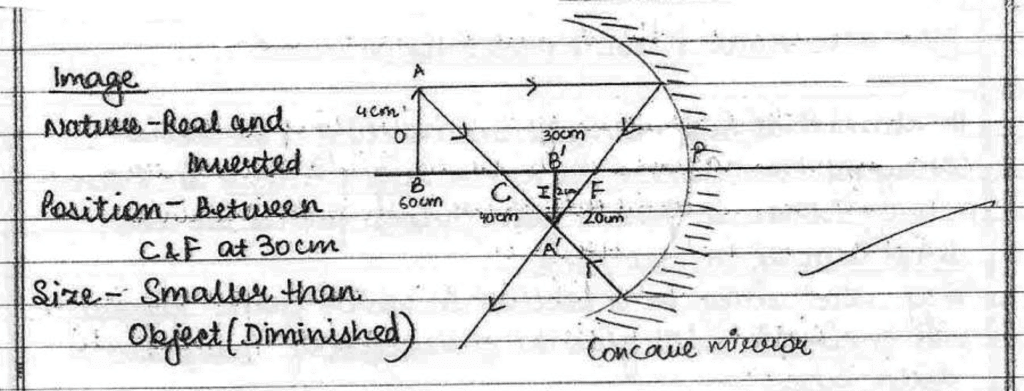
7. Draw the pattern of the field lines of the magnetic field around a current carrying straight conductor passing through and held perpendicular to a horizontal cardboard. State right-hand thumb rule and explain how this rule is useful to determine the direction of the magnetic field in the above case, if the direction of current in the conductor is vertically downwards.
Ans: 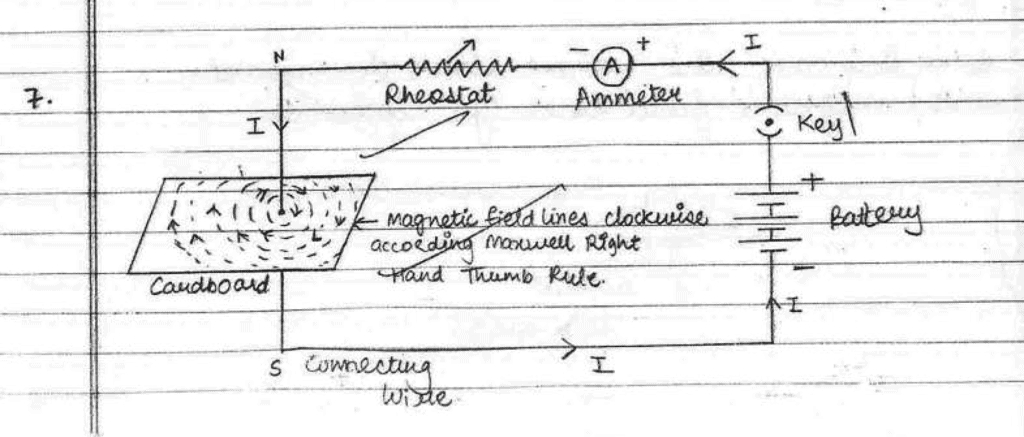
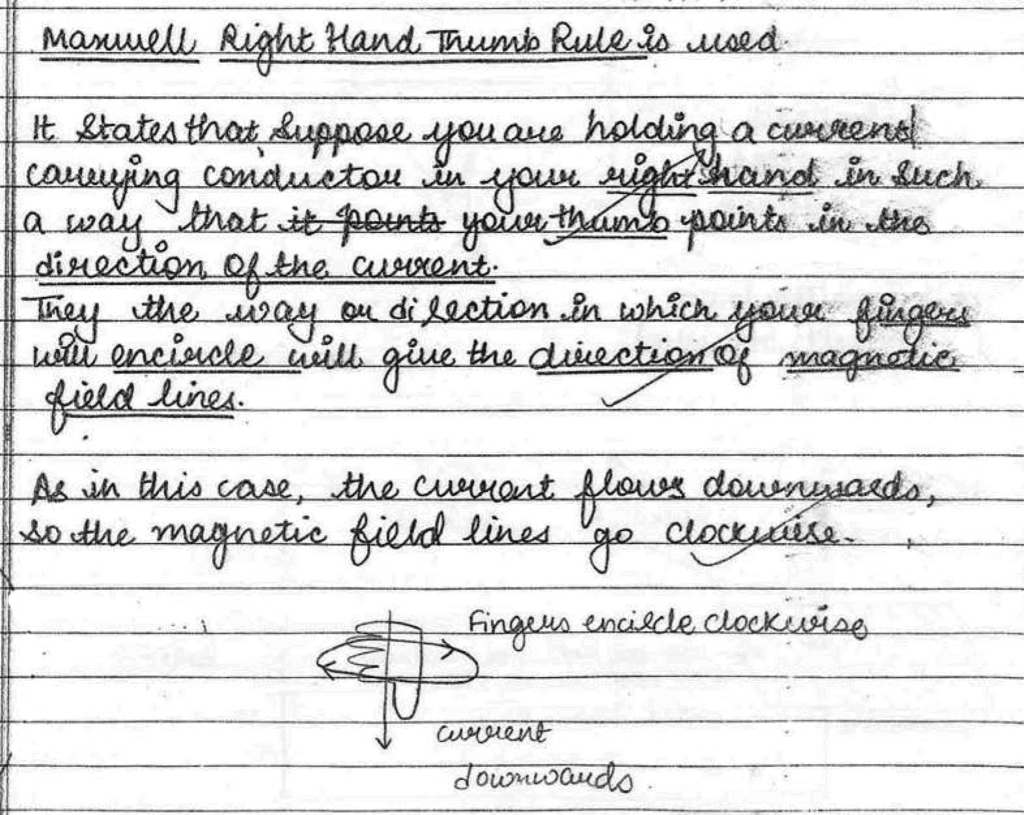
8. An ore on treatment with dil. HCl gives the smell of rotten egg. Name the type of this ore. How can the metal be obtained from its concentrated ore?
Ans: 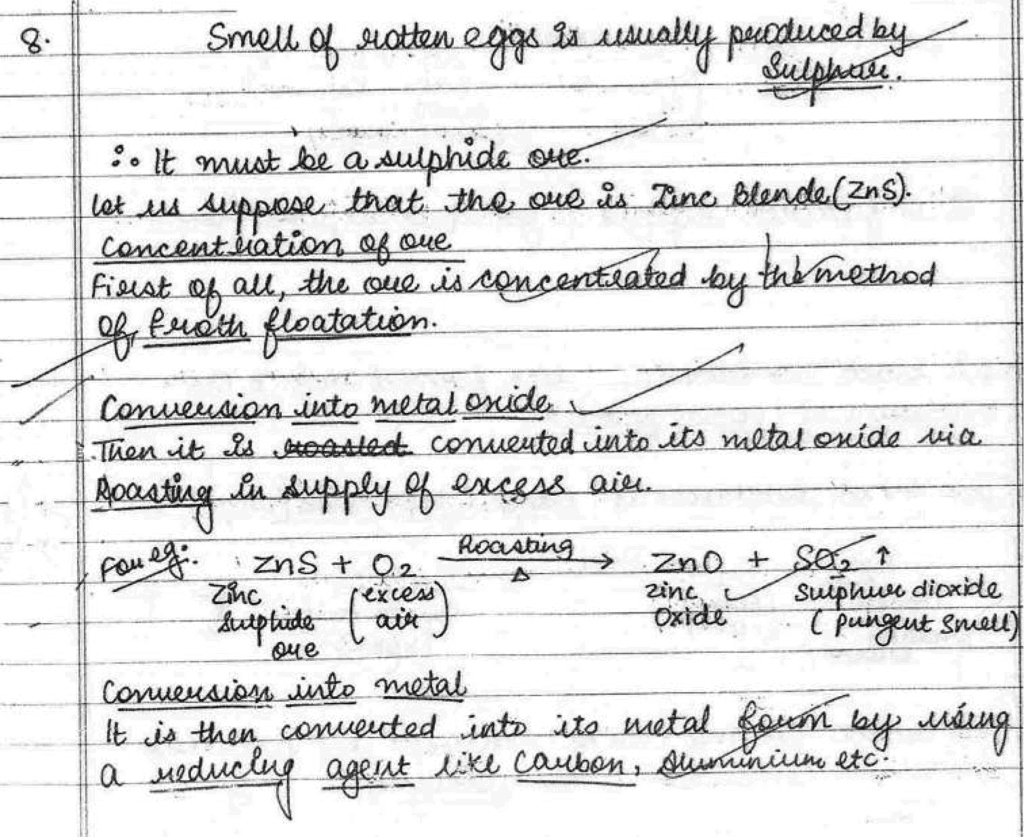

9. 2 g of ferrous sulphate crystals are heated in a dry boiling tube.
(a) List any two observations.
(b) Name the type of chemical reaction taking place.
(c) Write balanced chemical equation for the reaction and name the products formed.
OR
You might have noted that when copper powder is heated in a china dish, the reddish brown surface of copper powder becomes coated with a black substance.
(a) Why has this black substance formed?
Ans: 
(b) What is this black substance?
Ans: 
(c) Write the chemical equation of the reaction that takes place.
Ans: 
(d) How can the black coating on the surface be turned reddish brown?
Ans: 
10. A white powder is added while baking cakes to make it soft and spongy. Name its main ingredients. Explain the function of each ingredient. Write the chemical reaction taking place when the powder is heated during baking.
Ans: 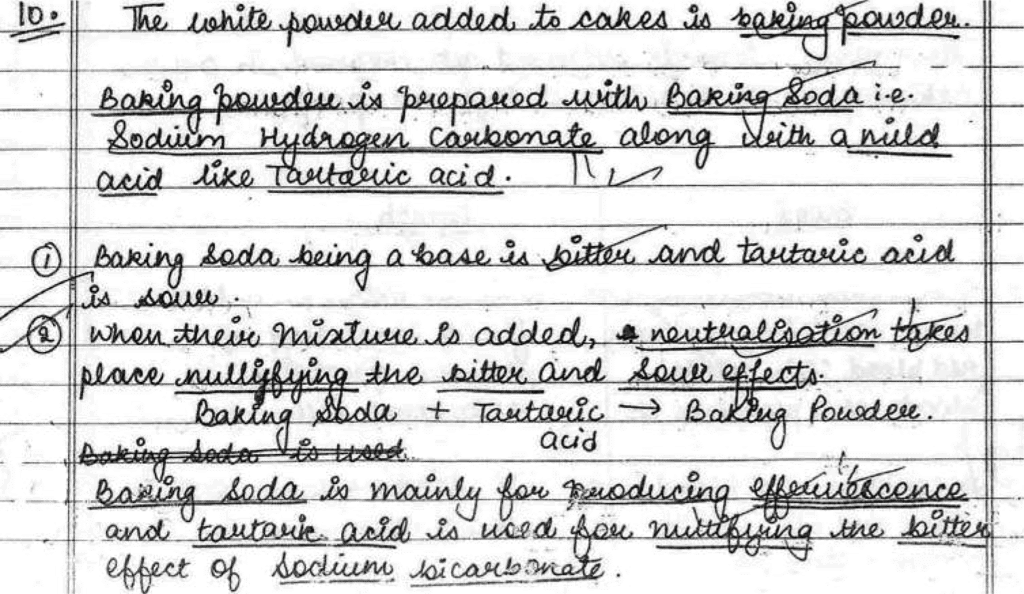
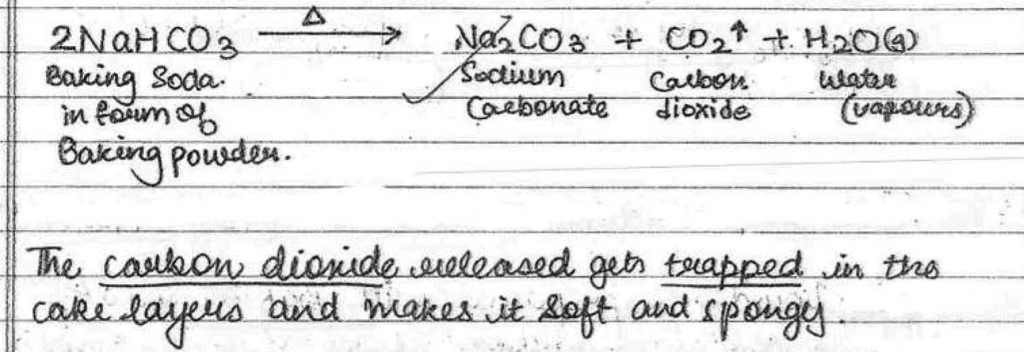
11. List in tabular form three differences between blood and lymph.
Ans: 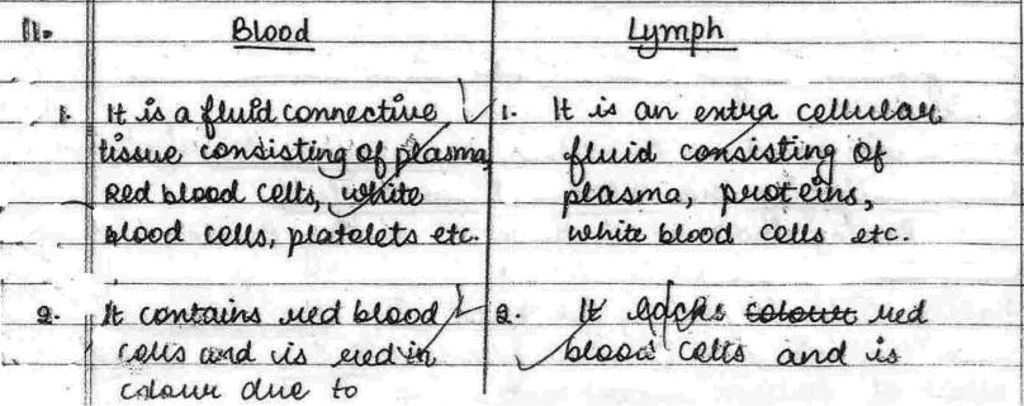

12. Why does the flow of signals in a synapse from axonal end of one neuron to dendritic end of another neuron take place but not in the reverse direction ? Explain.
Ans: 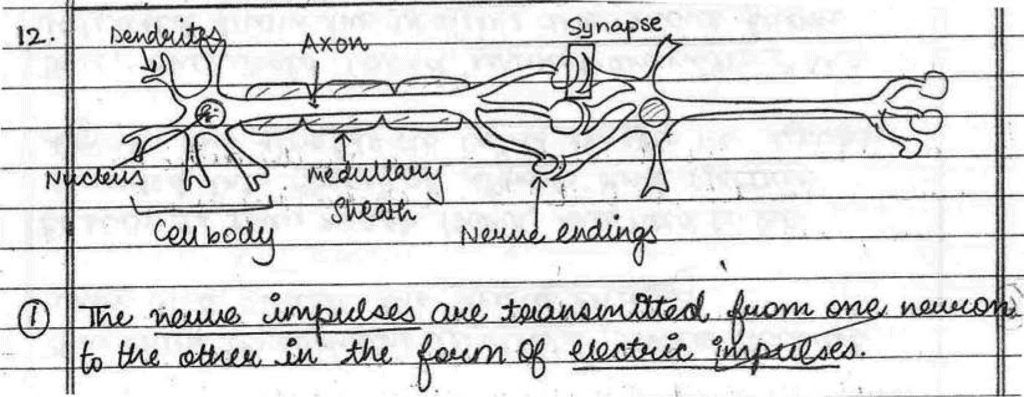

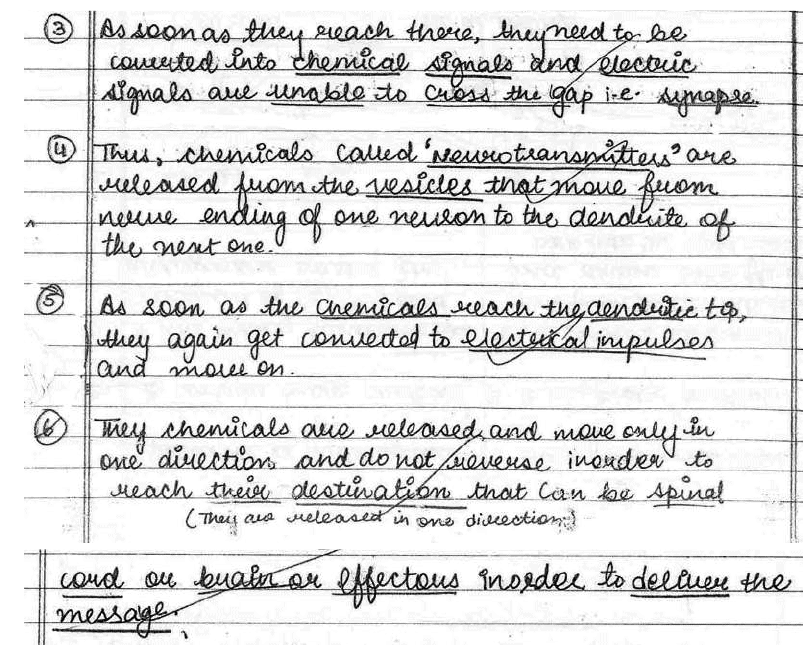
13. How does the creation of variations in a species promote survival ? Explain with the help of an example.
Ans: 

14. What is a food chain ? Why is the flow of energy in an ecosystem unidirectional ? Explain briefly.
OR
(a) Why should National Parks be allowed to remain in their pristine form?
(b) Why is reuse of materials better than recycling?
Ans: 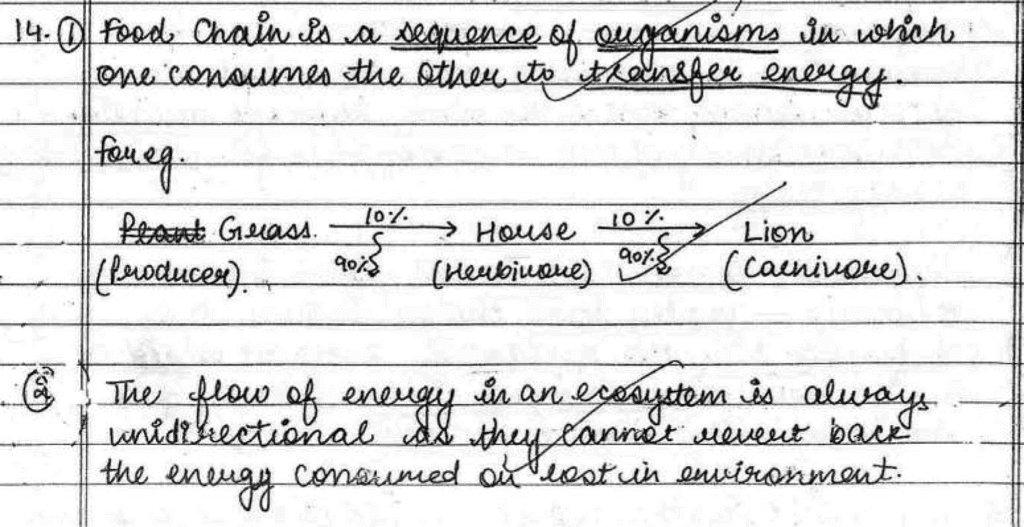
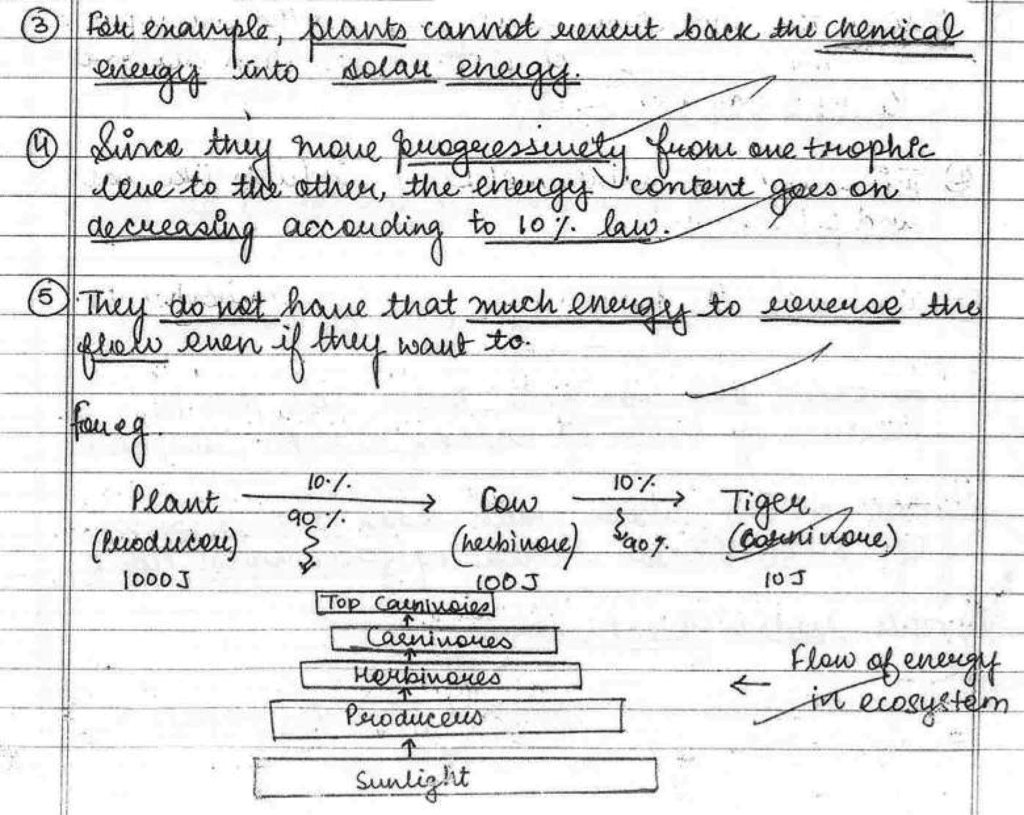
15. Mention the environmental consequences of the increasing demand for energy. List four steps you would suggest to reduce the consumption of energy.
Ans: 

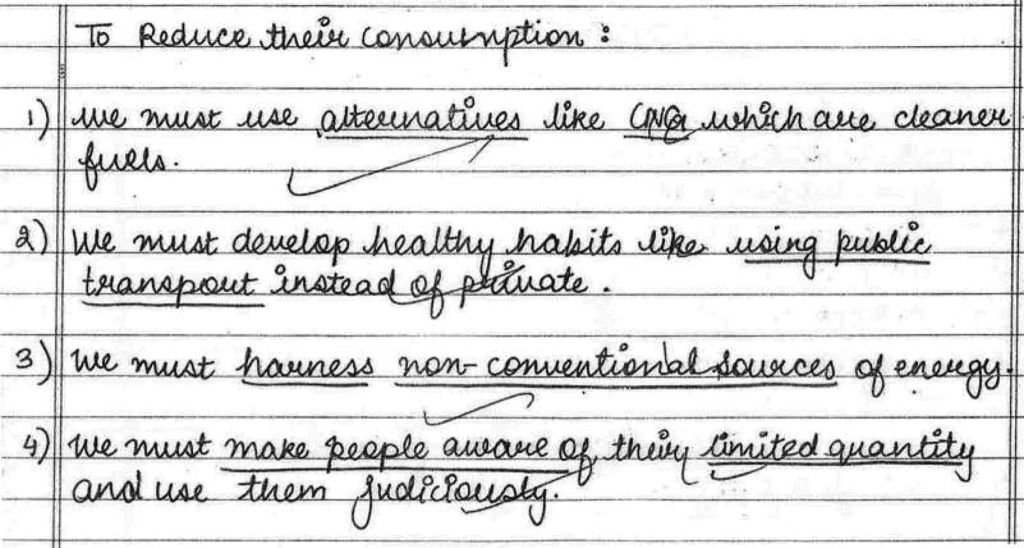
Section – D
16. A concave lens of focal length 60 cm is used to form an image of an object of length 9 cm kept at a distance of 30 cm from it. Use lens formula to determine the nature, position and length of the image formed. Also draw labelled ray diagram to show the image formation in the above case.
Ans: 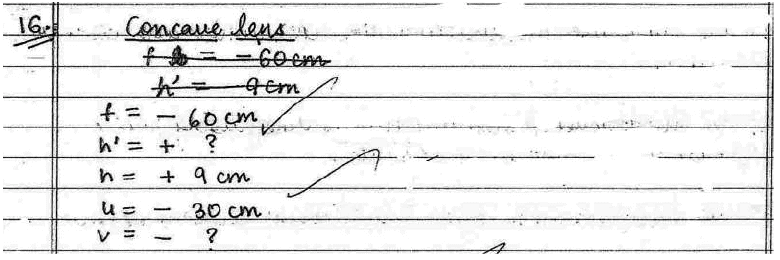
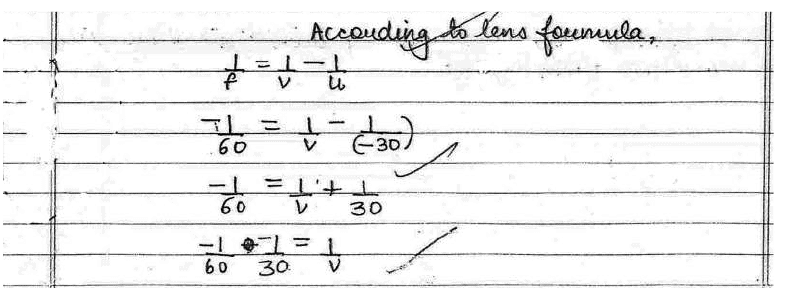
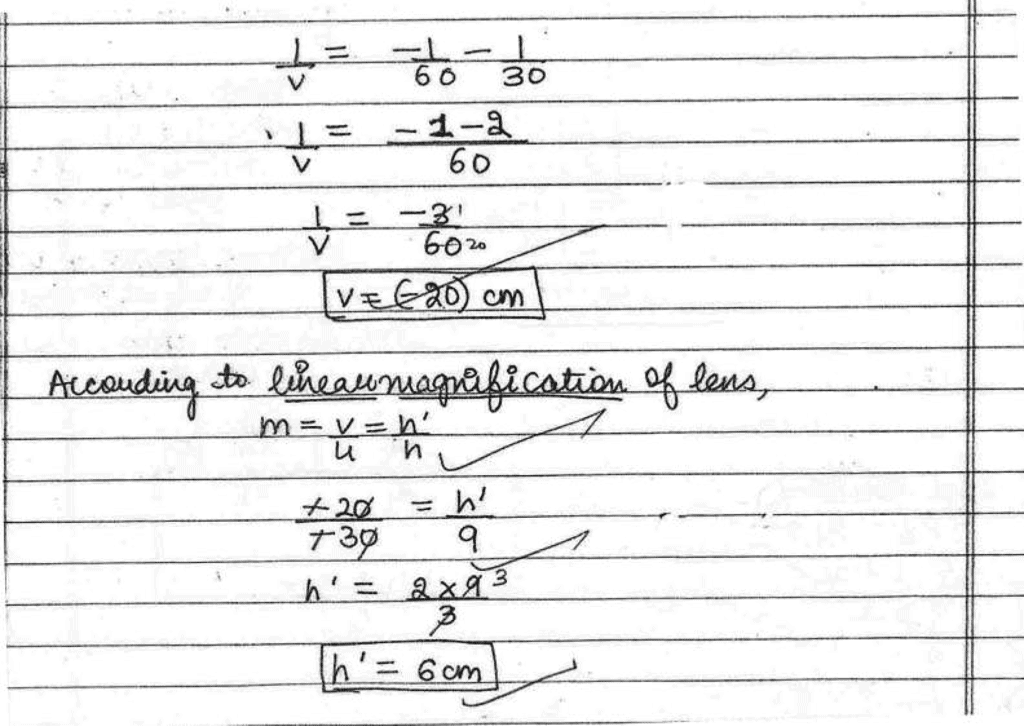
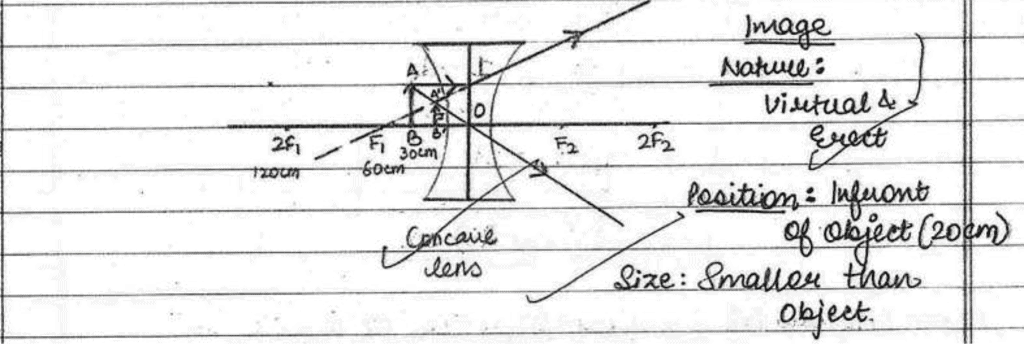
17. Compare the power used in 2 Ω resistor in each of the following circuits: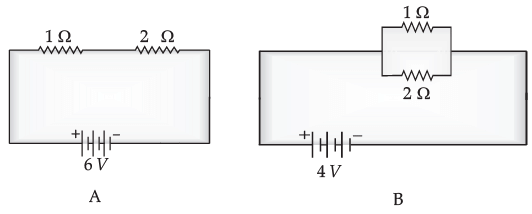
OR
A bulb is rated 40 W; 220 V. Find the current drawn by it, when it is connected to a 220 V supply. Also find its resistance. If the given bulb is replaced by a bulb of rating 25 W; 220 V, will there be any change in the value of current and resistance? Justify your answer and determine the change.
Ans: 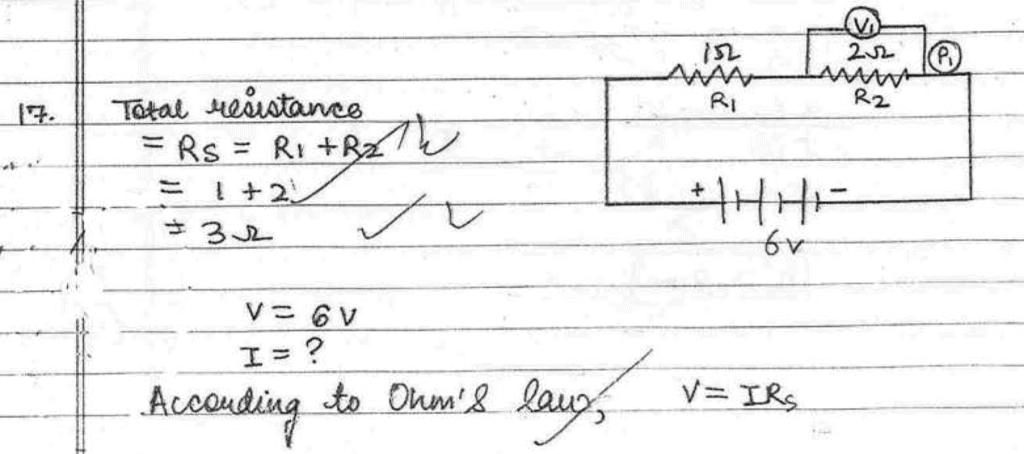

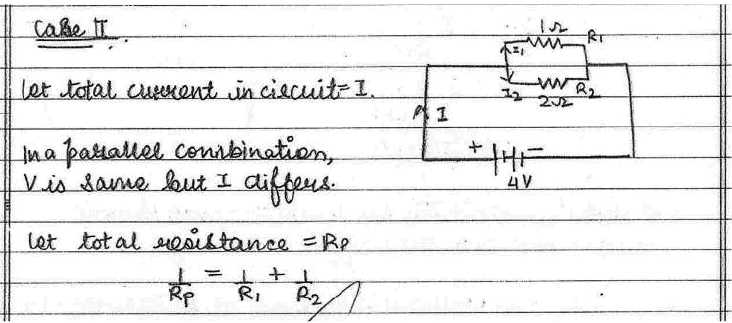
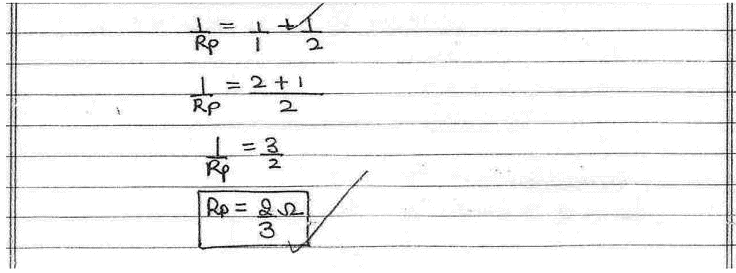
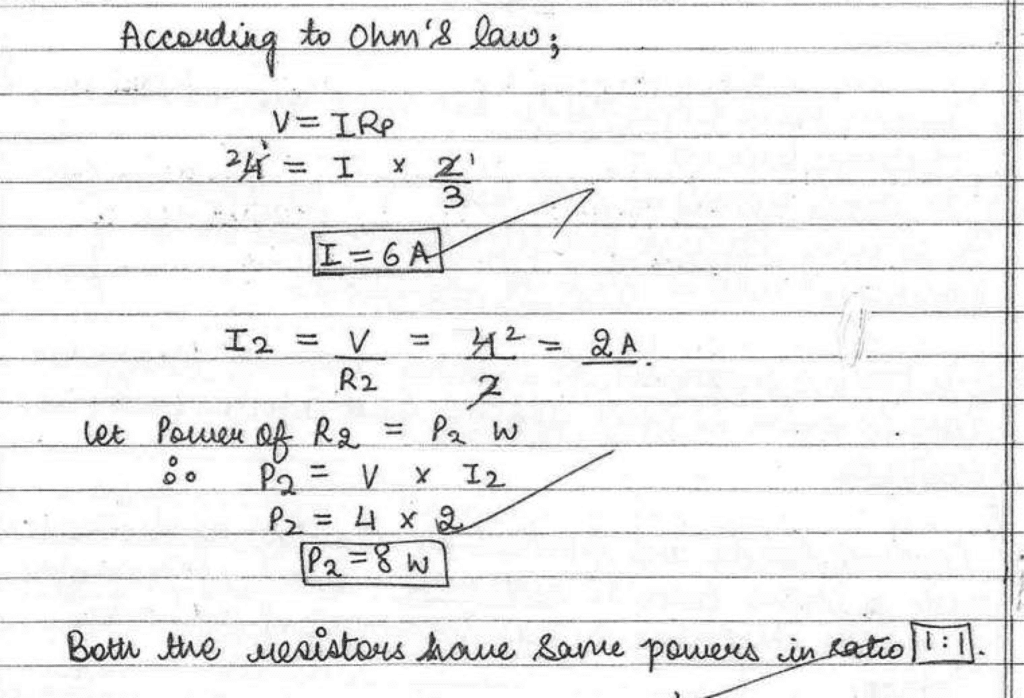
18. (a) State the reason why carbon can neither form C4+ cations nor C4– anions, but forms covalent bonds. Also state reasons to explain why covalent compounds
(i) are bad conductors of electricity.
(ii) have low melting and boiling points.
Ans: 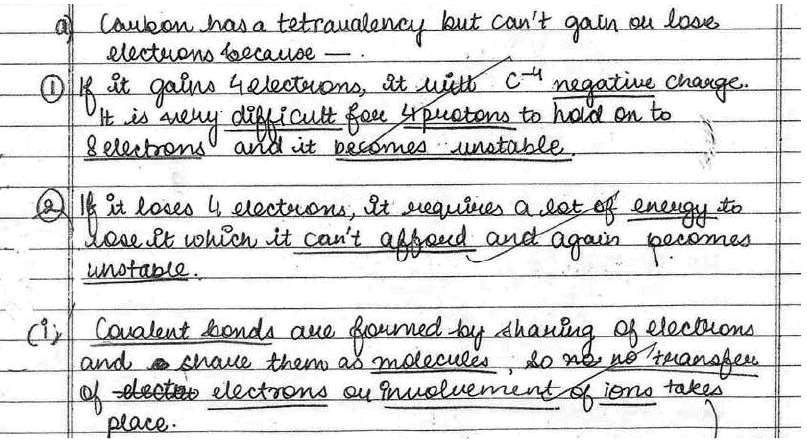
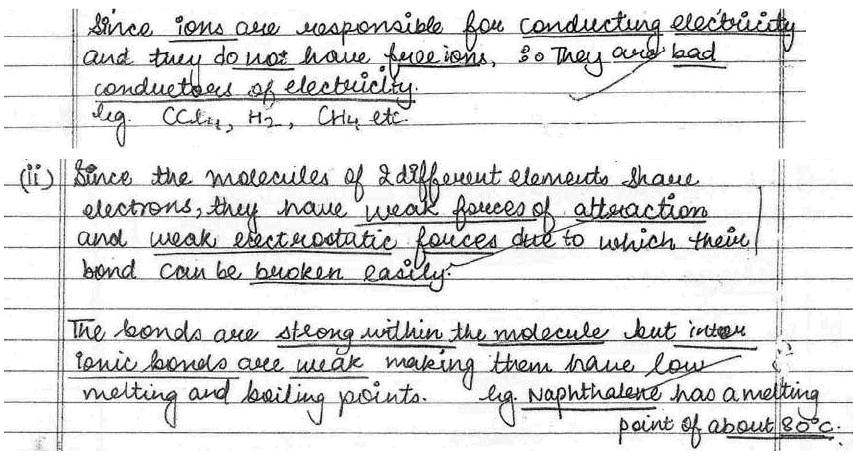
(b) Write the structural formula of benzene, C6H6.
OR
(a) Define the term ‘isomer ’.
(b) Two compounds have same molecular formula C3H6O. Write the name of these compounds and their structural formula. (c) How would you bring the following conversions:
(i) Ethanol to ethene
(ii) Propanol to propanoic acid
19. (a) Define groups in the Modern Periodic Table. How do valency, atomic size and metallic character vary in a group?
Ans: 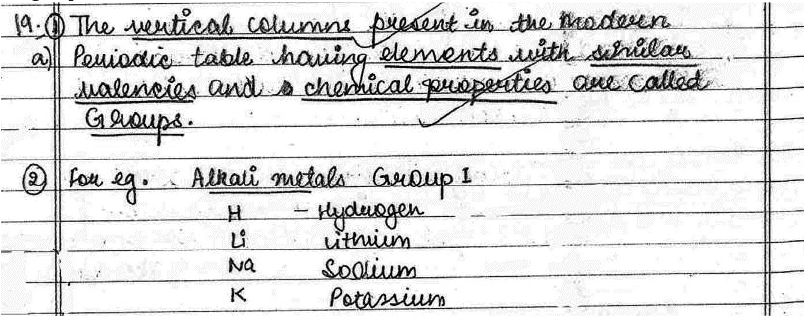
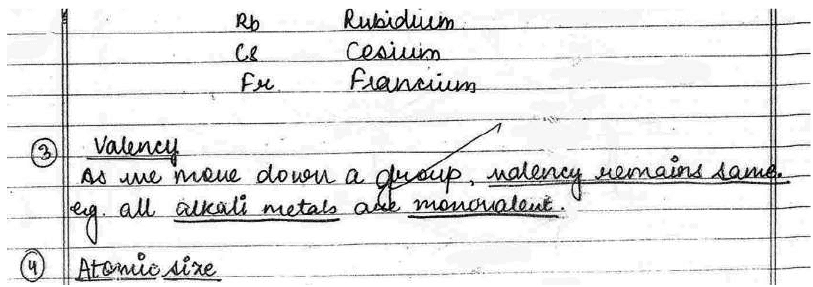
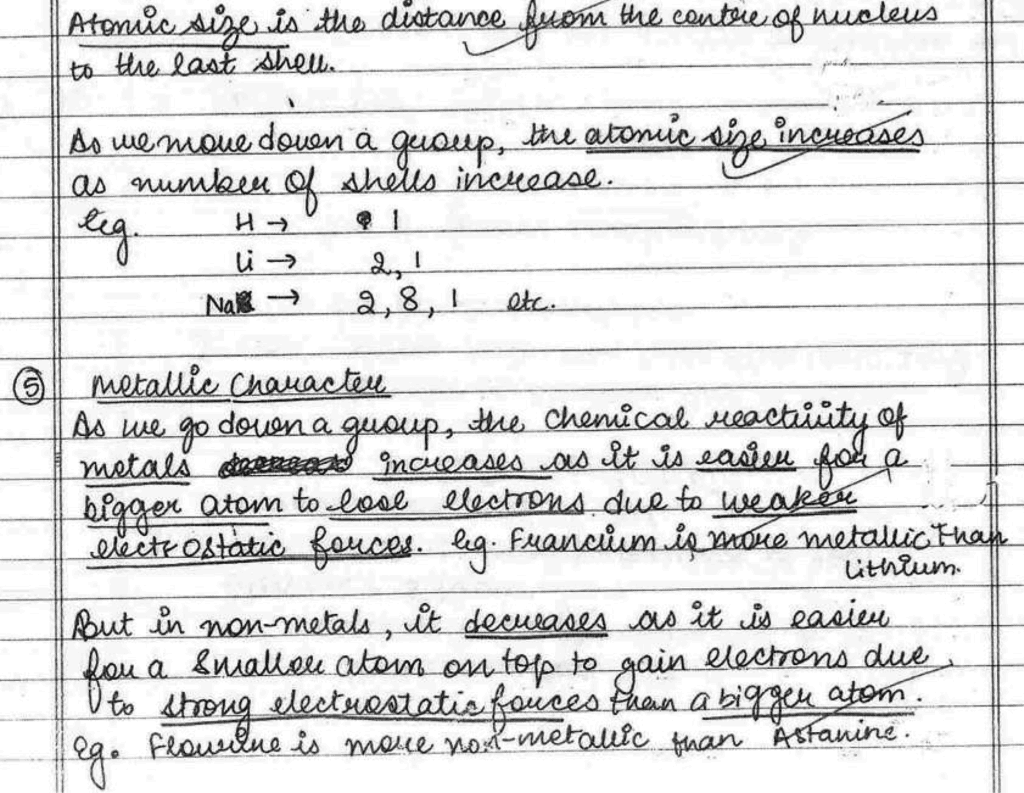
(b) The atomic number of an element is 14. Examine if this element will have metallic properties or not. Give reason to justify your answer.
Ans: 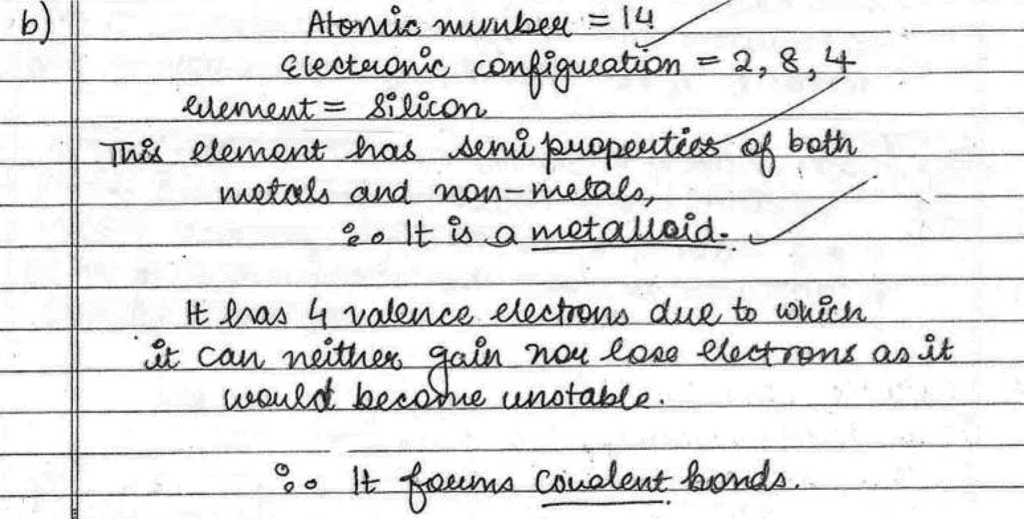
20. (a) How do the following provide evidences in favour of evolution in organisms ? Explain with an example for each.
(i) Homologous organs
(ii) Analogous organs
(iii) Fossils
Ans: 
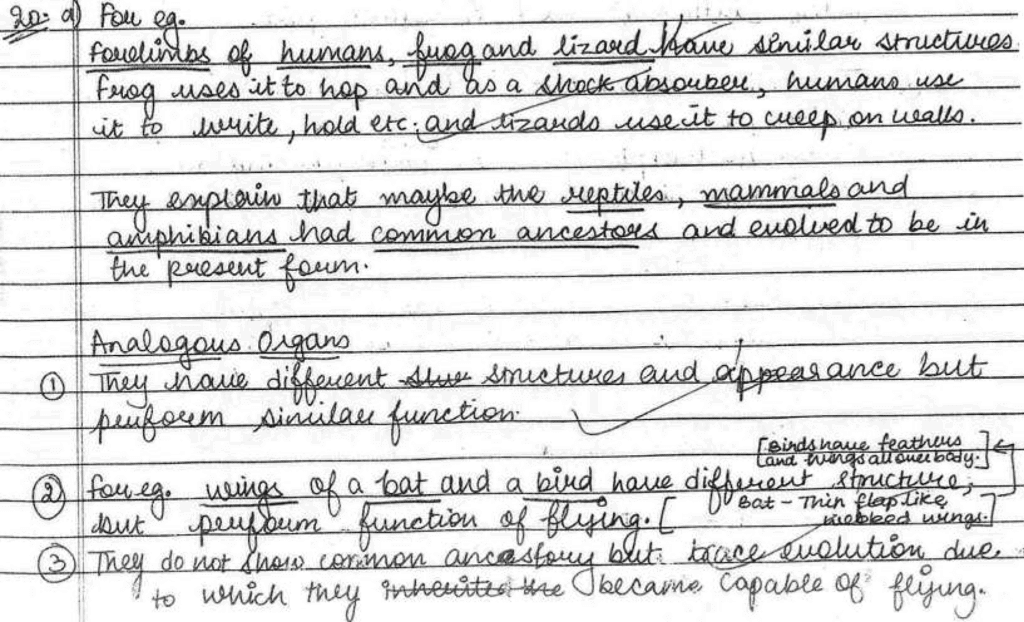

(b) Explain two methods to determine the age of fossils.
Ans: 
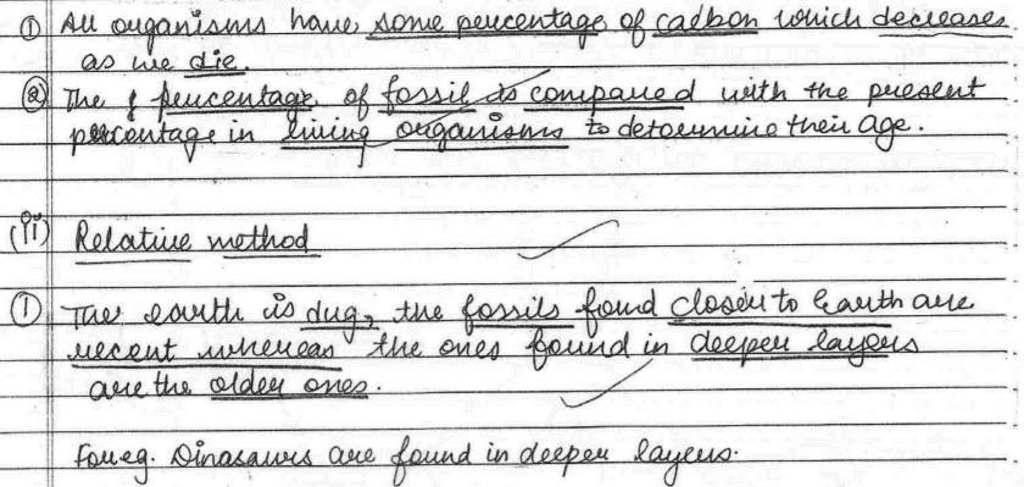
21. (a) Distinguish between cross-pollination and self-pollination. Mention the site and product of fertilization in a flower.
(b) Draw labelled diagram of a pistil showing the following parts: Stigma, Style, Ovary, Female germ cell
OR
(a) Draw a diagram of human female reproductive system and label the parts:
(i) which produce an egg.
(ii) where fertilization takes place.
Ans: 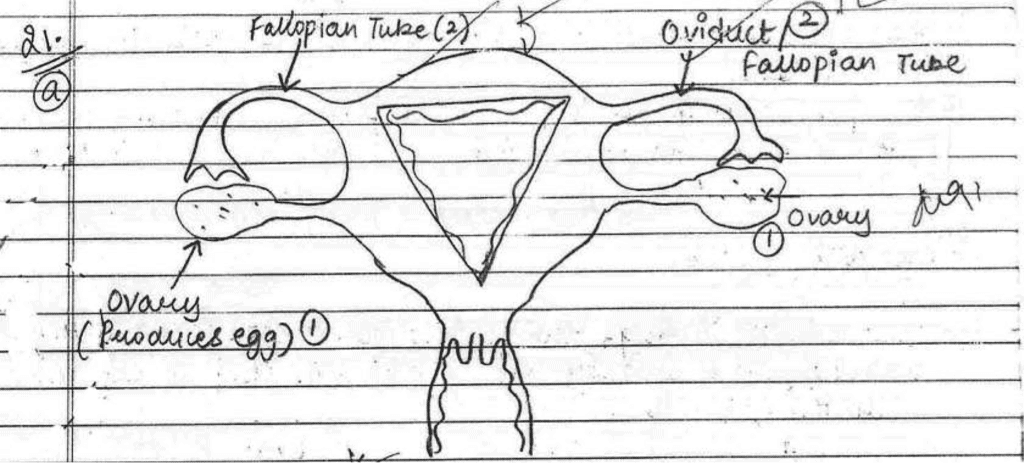
(b) List two bacterial diseases which are transmitted sexually.
Ans: 
(c) What are contraceptive devices ? Give two reasons for adopting contraceptive devices in humans.
Ans: 

Section – e
22. Draw labelled diagram to show the following parts in an embryo of a pea seed: Cotyledon, Plumule, Radical
Ans: 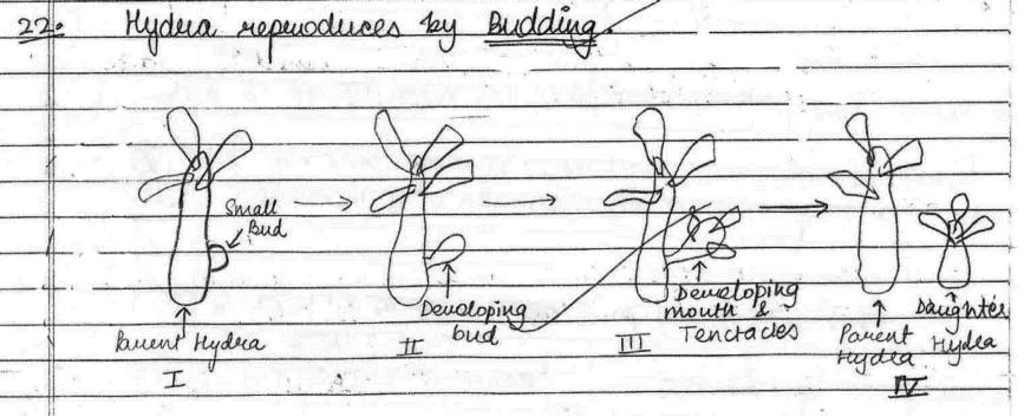
OR
A student observed a permanent slide showing asexual reproduction in Hydra. Draw labelled diagram in proper sequence of the observations that must have been made by the student. Name the process of reproduction also.
23. In the experiment ‘‘To prepare a temporary mount of a leaf peel to show stomata’’, glycerine and safranin are used. When and why are these two liquids used ? Explain.
Ans: 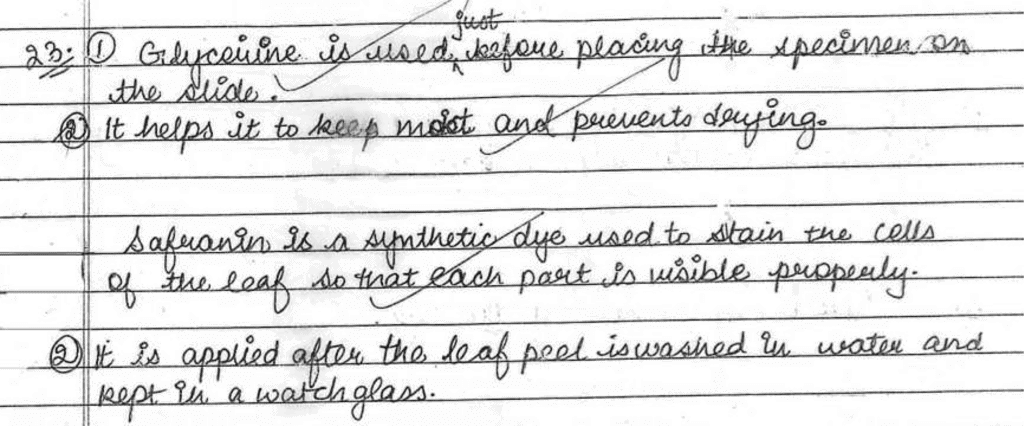
24. How is the presence of an acid tested with a strip of red litmus paper?
OR
A student is performing an experiment to study the properties of acetic acid. Answer the following questions:
(i) Name the substance he must add to acetic acid to produce carbon dioxide.
(ii) Give the relevant chemical equation for the reaction.
(iii) How would he test CO2 gas in the laboratory?
Ans: 
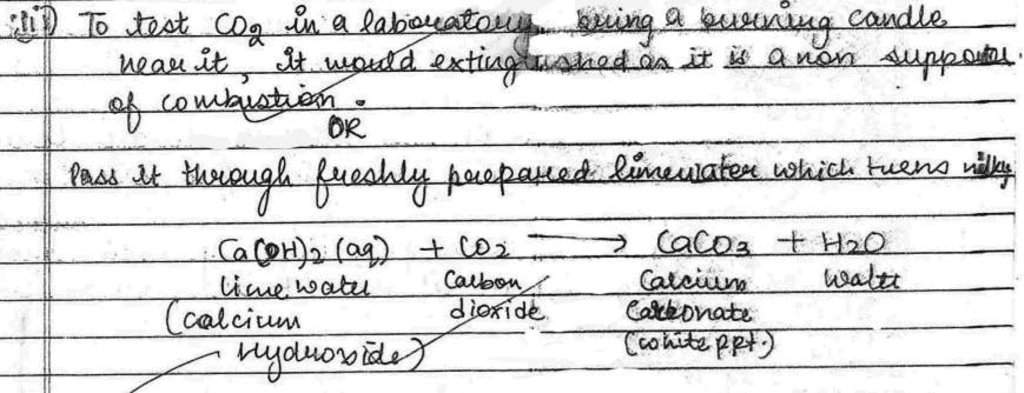
25. What would you observe on adding zinc granules to freshly prepared ferrous sulphate solution? Give reason for your answer.
Ans: 
26. A teacher gives a convex lens and a concave mirror of focal length of 20 cm each to his student and asks him to find their focal lengths by obtaining the image of a distant object. The student uses a distant tree as the object and obtains its sharp image, one by one, on a screen. The distances d1 and d2 between the lens/mirror and the screen in the two cases and the nature of their respective sharp images are likely to be
(a) (20 cm, 40 cm) and (erect and erect)
(b) (20 cm, 40 cm) and (inverted and inverted)
(c) (20 cm, 20 cm) and (inverted and inverted)
(d) (20 cm, 40 cm) and (erect and inverted)
Give reason for your answer.
Ans: 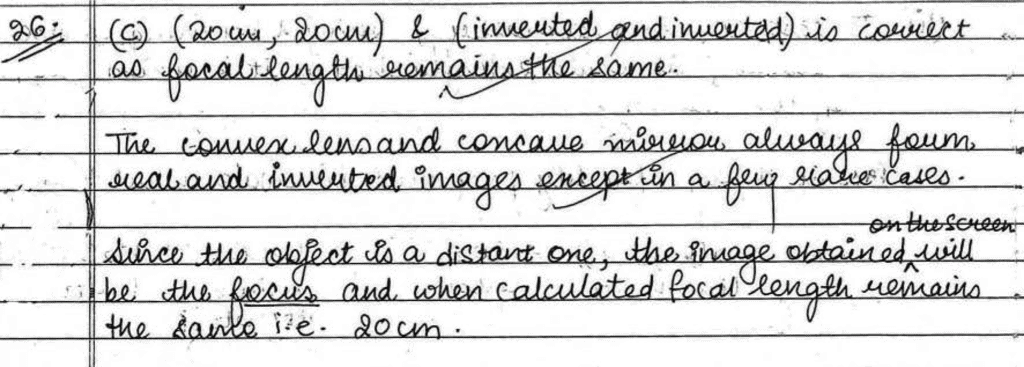
27. The rest position of the needles in a milliammeter and voltmeter, not in use, are as shown in Figure A. When a student uses these instruments in his experiment, the readings of the needles are in the positions shown in Figure B. Determine the correct values of current and voltage the student should use in his calculations.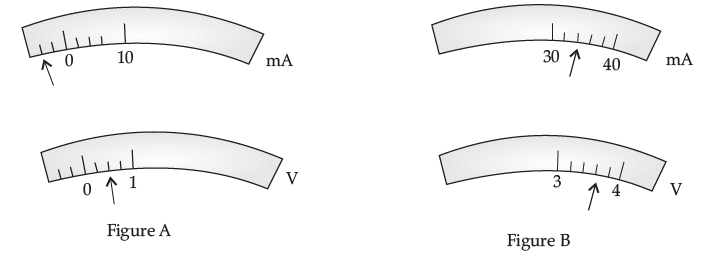
OR
In the experiment to study the dependence of current (I) on the potential difference (V) across a resistor, a student obtained a graph as shown.
(i) What does the graph depict about the dependence of current on the potential difference?
(ii) Find the current that flows through the resistor when the potential difference across it is 2·5 V.
Ans:
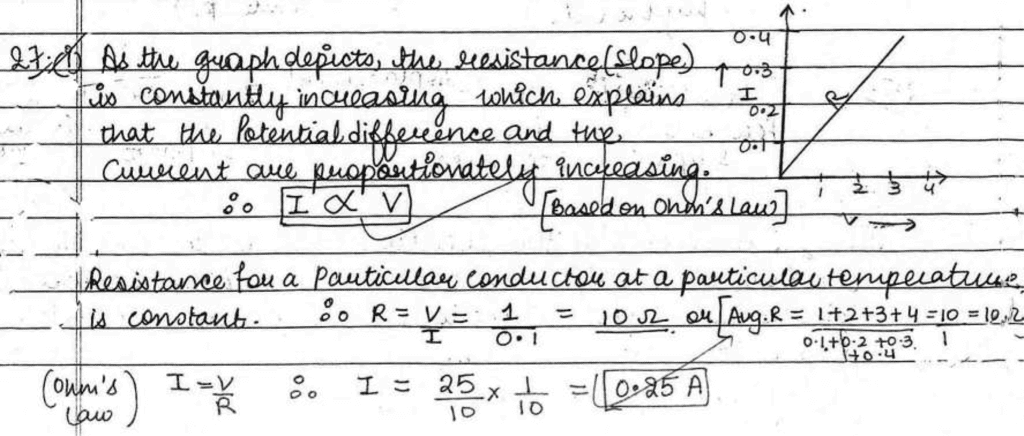
FAQs on Science Topper`s Answer Sheet - 2019, Class 10
| 1. What are the different sections in the Class 10 Science Topper's Answer Sheet? |  |
| 2. How many sections are there in the Class 10 Science Topper's Answer Sheet? |  |
| 3. What is the purpose of Section E in the Class 10 Science Topper's Answer Sheet? |  |
| 4. Which section of the Class 10 Science Topper's Answer Sheet focuses on practical-based questions? |  |
| 5. How can the Class 10 Science Topper's Answer Sheet help students prepare for their exams? |  |

|
Explore Courses for Class 10 exam
|

|

















